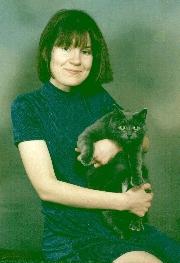The Future of the White Race

by Emily Monroy
July/August 2004
The future of the White race, it seems, is a concern for many. Racist organizations lament falling White birthrates in the face of what they see as a “rising tide of colour.” In addition, they decry not only miscegenation but interracial adoption as well. One website, for instance, berates actor Tom Cruise and his then-wife Nicole Kidman for adopting a biracial child. On the somewhat more moderate side, books like Patrick Buchanan’s Death of the West and French journalist Christiane Collange’s Chers Enfants [Dear Children] forecast the disappearance of Western civilization. (What Buchanan and Collange define as “West” is rather curious, as both exclude Latin America from this category but include Japan, a nation whose culture and history are hardly Occidental.) On the other hand, some liberal thinkers posit a more “feel-good” outcome whereby different peoples will eventually blend into a single cosmic race. Still other commentators, like journalist Steve Sailer, are sceptical of both the “cosmic race” and “Whites on the brink of extinction” theories. According to Sailer, Whites are in no danger of dying out anytime soon, and the possibility of the world’s inhabitants homogenizing into a single race is remote at best.
Steve Sailer’s view is probably that which comes closest to my own. I would add that even in the White Supremacists’ worst-case scenario, in which individuals of unmixed European descent die off, there will still be large contingents of people with at least some European ancestry who lead thoroughly Western lifestyles. Latin American mestizos and mulattos are a prime example. Analogous mixed race but culturally Western groups include the Coloureds of South Africa and the inhabitants of Cape Verde and the Seychelles off the coast of Africa, who descend primarily from White men and their Black female slaves.
Interestingly, while racists view miscegenation, particularly that between White women and men of colour, as a threat to the White race, throughout history race mixing has affected the non-European gene pool far more than that of Europeans and involved White males rather than females. Scientific research on non-White groups under European rule, such as the Maori of New Zealand and Inuit of Greenland, shows they have a considerable portion of European genes, the majority of which have come through the male, not female, line. Why? First, most explorers, adventures and settlers from Europe were male. Men of colour were also more likely than women to be killed in skirmishes between natives and invaders. Finally, they often saw their women abandon them for their White masters. Chronicles from Latin America, for instance, are replete with accounts of Indian women leaving their native husbands and pairing off with Spanish soldiers, settlers, and even priests (as Belgian sociologist Pierre van den Berghe notes, “Celibacy, however saintly, goes against most people’s grain”). In other words, many non-White men lost out in the mating game. Of course not every European colony experienced a massive infusion of White blood. Miscegenation did not occur on a large scale in Europe’s possessions in Africa (other than South Africa and some of the islands off the coast) and Asia, as only small numbers of Whites ever migrated there.
In The Death of the West, Patrick Buchanan rues not only the drop in White birthrates but the decline of traditional Judeo-Christian morality in the West. He cites as examples of the second phenomenon pornography, abortion, and White women’s disinterest in bearing children. It does not seem to occur to him that members of the societies he fears are overtaking the West might share his values more than do his fellow Euro-Americans. Take the issue of procreation. While voluntary childlessness is becoming more acceptable in Europe and North America, it is virtually unthinkable in most non-Western cultures. The Vietnamese, for instance, “cannot imagine not having children,” according to an American woman who lived in that country. Even Buchanan’s beloved Christian religion is hardly the preserve of Europeans and North Americans. (Ironically, the very Middle Eastern Jesus Christ might not qualify as a Westerner in Pat’s eyes.) One of the largest and most observant Catholic nations in the world today is the Philippines, which was colonized by Spain but remained culturally Asian.
It similarly never strikes Buchanan that those failing to do their share to perpetuate the White race probably do not subscribe to his worldview. Most “childfree” (voluntarily childless) individuals, for example, are significantly less religious and less traditional in other ways than their parent counterparts. In the same vein, The Nation columnist Katha Pollitt writes that couples – which I suspect in her circle of friends means “White left-wing couples” – want “small, planned families.” On the other hand, as Buchanan himself recognizes, the more religious families are, the more children they are likely to have. (One such couple is former Arkansas state rep Jim Bob Duggar and his wife Michelle, who had fourteen children after deciding to “let the Lord give us the gifts that he wants to give us.”) So people like Katha Pollitt and her acquaintances might eventually be “outbred” by individuals – both White and non-White – sharing Buchanan’s and other conservatives’ values, like religion, traditional families, and well-behaved children.
An article some years back stated that due to Italy’s below-replacement birthrate, the Italian people might die out. That seems a bit alarmist to me. However, if it proves to be the case, I figure Italians can be easily replaced by Latin Americans. Who else venerates soccer stars, beauty contest winners and the Virgin Mary as much as Italians do? So in the long run, neither the White race, Western culture nor traditional values appear to be in imminent danger of extinction.
Emily Monroy is a professional translator and is of Irish, Italian and Norwegian descent. Born in Windsor, Ontario, she now resides in Toronto. Her articles have appeared in several publications, including Interracial Voice, Cats Canada, and Urban Mozaik. She welcomes feedback on her articles. You can contact Emily here

